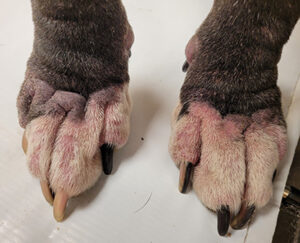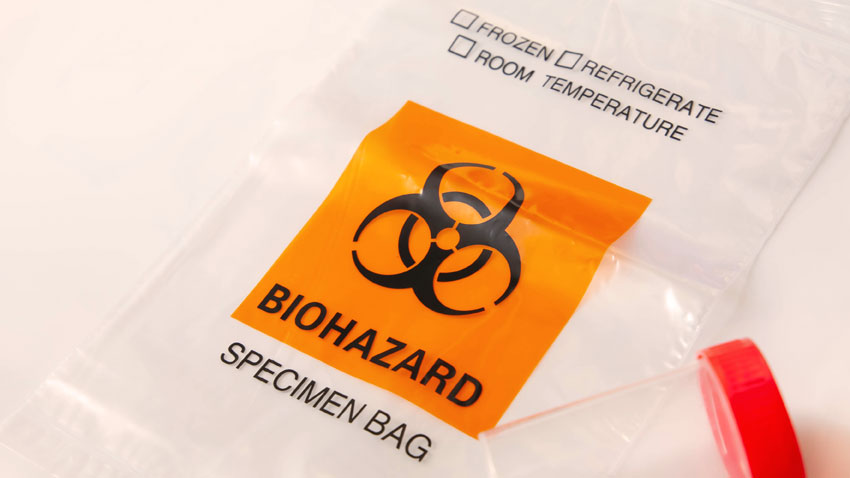Above: A Yorkshire Terrier with erythema (skin inflammation) and hyperpigmentation due to atopic dermatitis.
Atopic dermatitis is one of the most common cutaneous inflammatory and pruritic diseases in dogs. The treatment options have been expanding over the years, and it is important to note that not all therapies work the same way. Recommendations should always be individualized on basis of the patient’s history and clinical signs. Various systemic therapies are routinely used in dogs with atopic dermatitis:
- Antihistamines have low efficacy in treating allergic diseases in dogs. These medications work best when used in conjunction with other therapies for patients with mild signs of atopic dermatitis.
- Glucocorticoids will work in most cases of atopic dermatitis, helping to reduce the skin inflammation and to control the pruritus. However, there are relevant side effects expected with this therapy. Glucocorticoids can be used for shorter time periods, or longer if a patient does not respond well to other therapies. For long-term use, this should be a last resort.

Pit Bull Terrier with chronic pododermatitis due to atopic dermatitis. - Allergen specific immunotherapy (“allergy shots”, “allergy vaccines”) is used as a single treatment or in association with other therapies to reduce the use of other medications. It will require an intradermal skin test to determine which allergens show a positive reaction. These allergens are used to formulate the allergen solution (immunotherapy) to be administered at home. Immunotherapy can be a subcutaneous injection or oral solution (sublingual). It may take up to a year to observe improvement of clinical signs with this treatment option.
- Cyclosporine is a calcineurin inhibitor and exhibits anti-pruritic and anti-inflammatory activity in dogs with atopic dermatitis. It has been used for the control of allergic chronic diseases for almost two decades, as a single treatment or as a glucocorticoid-sparing agent. It may take up to 4 weeks for a clinical response to be observed. Gastrointestinal upsets are the most common side effects but are transient or can be controlled by administering frozen capsules (stored in freezer up to 28 days). It is recommended to use the microemulsion veterinary formulations (Atopica® or Cyclavance®) for better treatment outcome (avoid use of generic or compound formulations).
- Apoquel® is a JAK inhibitor (mainly JAK1) and inhibits the activity of several pro-inflammatory, pro-allergic and pruritogenic cytokines responsible for the inflammation and pruritus seen in dogs with atopic dermatitis. It is rapidly absorbed, and its speed of action is comparable to glucocorticoids. It can be used in dogs 12 months of age and older for the long-term control of atopic dermatitis. Apoquel can also be used in association with other medications such as NSAIDs and immunotherapy, and it should be avoided in dogs previously diagnosed with neoplastic conditions.
- Cytopoint® is a caninized monoclonal antibody anti-IL31, the first biologic commercially available for the treatment of allergic diseases in dogs. Its technology has been largely used in human medicine to treat several immunologically driven diseases. Cytopoint is an injectable therapy applied to dogs by the veterinarian and its efficacy lasts 4 to 8 weeks. It is safe to be used in dogs of any age, in dogs with other concurrent diseases, and in combination with other medications.
Canine atopic dermatitis is a complex disease with different clinical manifestations and therapeutic response. It is fundamental to remember that it is a non-curable disease and, regardless of the therapy chosen, life-long maintenance will be required. Treatment options should be regularly reassessed and adjusted based on the specific needs of patients and their owners.
By Clarissa Souza, DVM, MSc, PhD, DACVD




